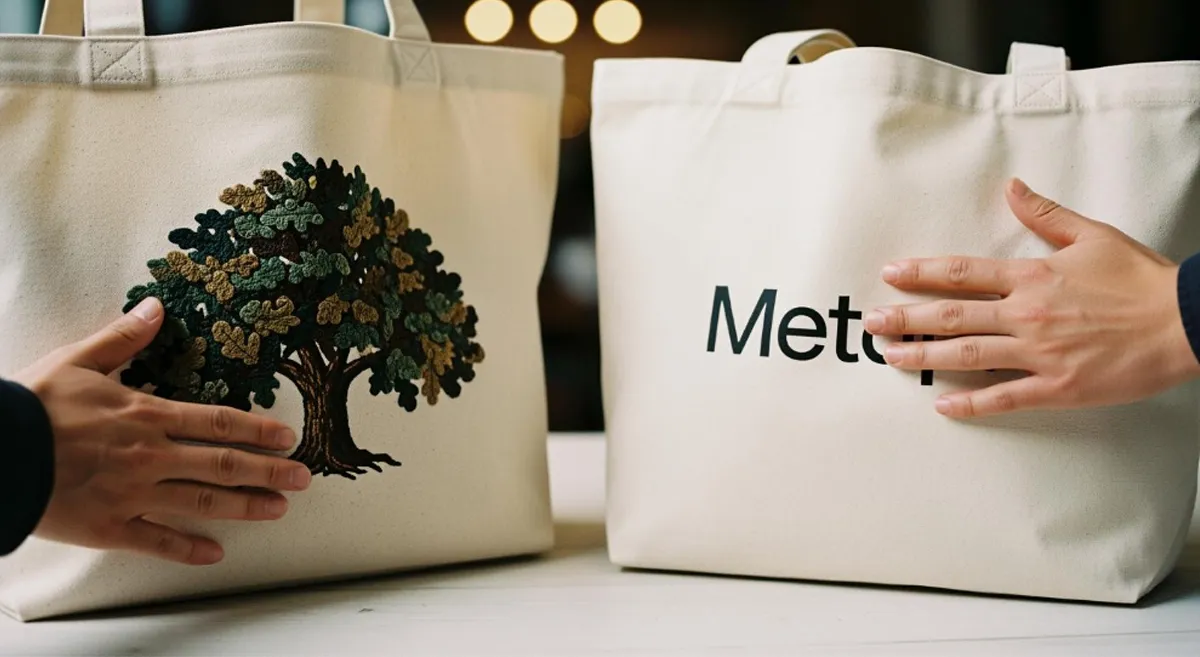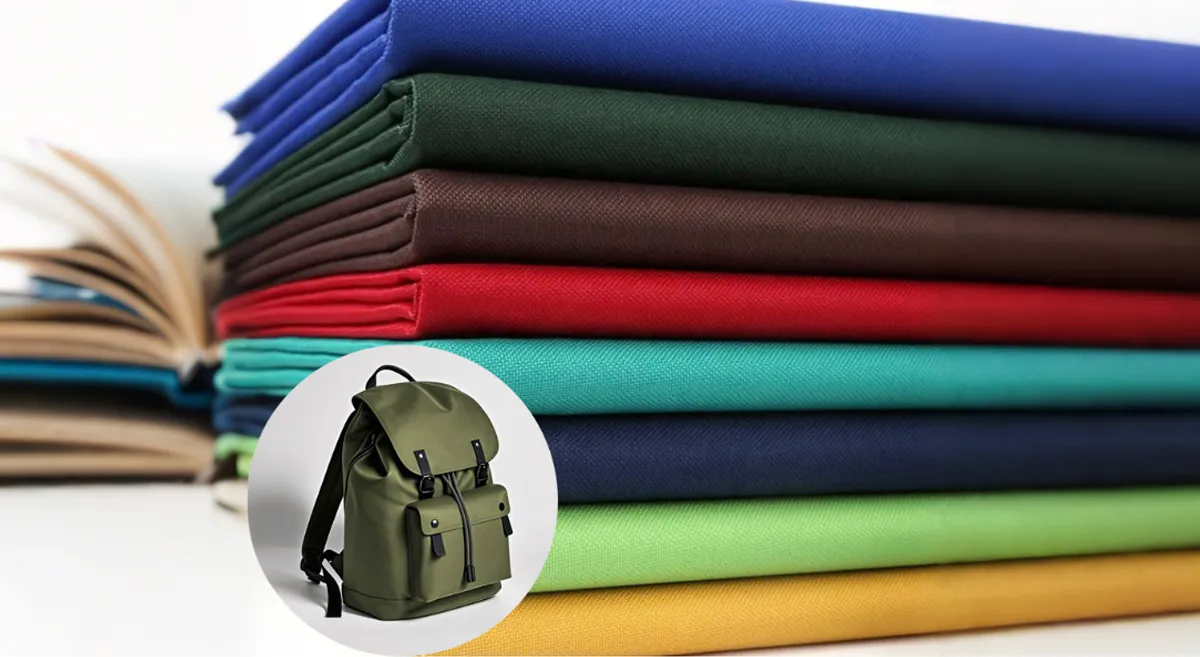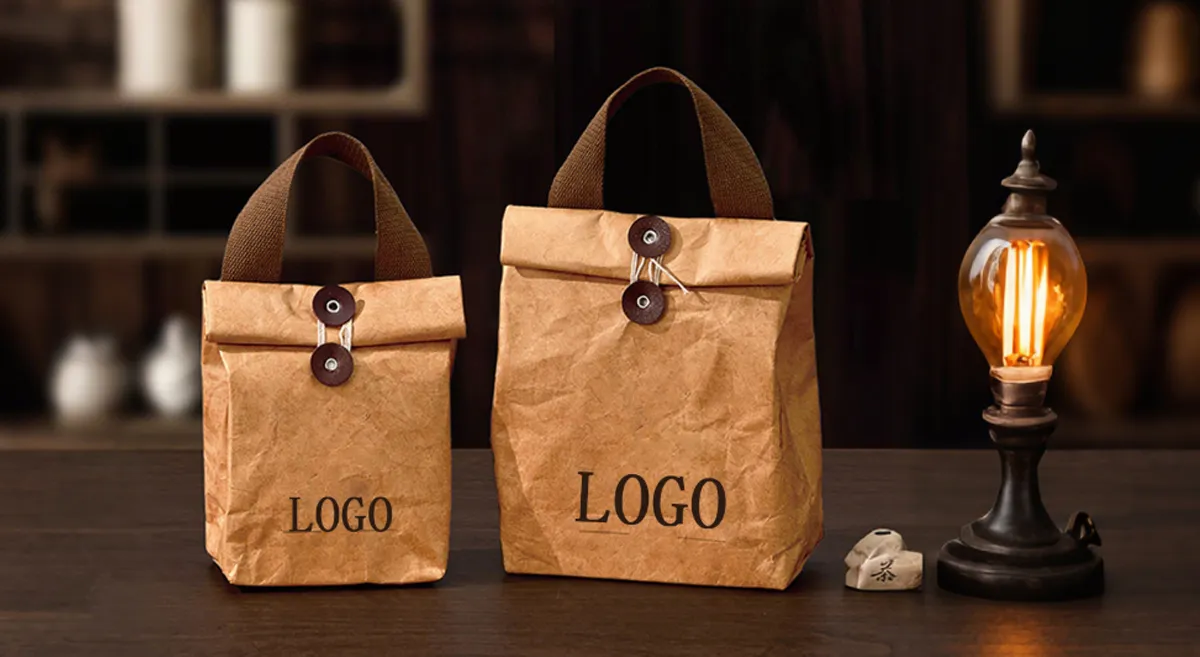
You may ask, what are mesh bags made of? Most mesh bags use materials like polypropylene, nylon, polyester, and cotton. Each material has its own special feature. Nylon is strong and bends easily. Cotton is natural and good for the environment. Nylon mesh is the most popular with 38.2%. Polyethylene, polypropylene, and cotton come next.
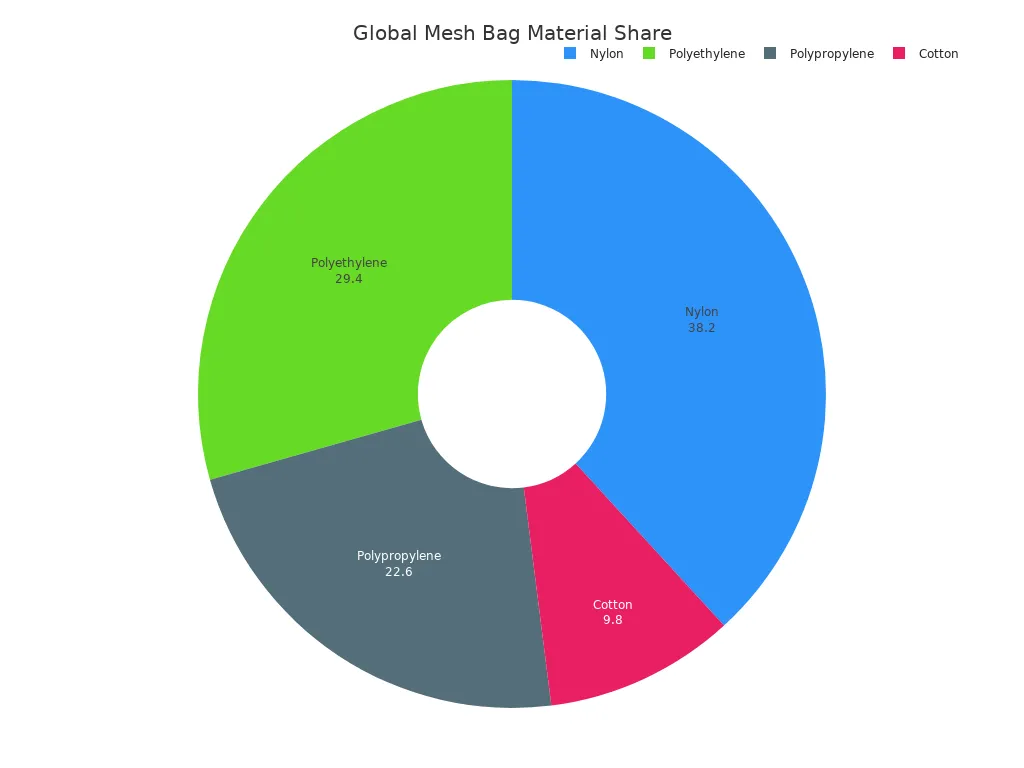
You can find these materials in many mesh bags. Here is a quick look at how each type is used:
| Material Type | Type of Mesh Bag | Common Applications |
|---|---|---|
| Nylon | Drawstring Mesh Bags | Holding sports gear, laundry, and small things |
| Polyester | Mesh Produce Bags | Carrying fruits, vegetables, and other foods |
| Polypropylene | Mesh Laundry Bags | Washing delicate clothes, keeping garments safe |
Key Takeaways
- Mesh bags use materials like nylon, polypropylene, polyester, and cotton. Each material has its own special qualities.
- Nylon mesh is tough and bends easily. It works well for sports gear and laundry bags. Nylon is simple to wash and does not rust.
- Polypropylene mesh is light and keeps water out. It is good for laundry and produce bags. It can carry heavy things and does not break easily.
- Polyester mesh lasts a long time and lets air pass through. It is used for factories and produce bags. It does not smell bad and stops mold.
- Cotton mesh bags feel soft and are good for the earth. They are nice for shopping and holding fruits. Organic cotton is even better for nature.
- When picking a mesh bag, think about how you will use it. Check if it is strong and good for the earth. This helps you choose the right one.
- Find bags with strong seams and zippers. This makes your mesh bag last longer and work better.
- Bags made from recycled PET and organic cotton help cut down on plastic trash. They are safer for the planet.
What Are Mesh Bags Made Of: Main Materials
Polypropylene Mesh
Features
You might wonder what makes polypropylene mesh stand out. This material is lightweight but strong. It has a high tensile strength, which means it can hold heavy items without breaking. Polypropylene mesh resists water, so your bag stays dry even if it gets wet. It also handles heat well and does not melt easily. The mesh feels semi-rigid, so it keeps its shape.
Here’s a quick look at its main properties:
| Property | Description |
|---|---|
| Chemical Formula | C3H6 (carbon and hydrogen) |
| Crystallinity | Up to 75% (strong and stable) |
| Melting Point | About 160°C (syrup-like liquid when melted) |
| Heat Deflection Temperature | 70-100°C (can handle warm loads) |
| Tensile Strength | 4,800 psi (great for heavy loads) |
| Water Absorption | Less than 0.01% (almost waterproof) |
| Operating Temperature | Up to 180°F (82.2°C) |
| Surface Hardness | Rockwell R scale 92 (semi-rigid) |
| Density | 0.895-0.93 g/cm³ (very light) |
Polypropylene mesh also resists many chemicals, acids, and bases. However, it does not like strong oxidizing acids or some solvents.
Pros & Cons
Tip: Polypropylene mesh bags are a smart choice if you want something tough and light.
Pros:
- Strong and durable for daily use
- Lightweight, so you can carry more without extra weight
- Water-resistant and dries quickly
- Handles many chemicals without damage
Cons:
- Not as flexible as nylon mesh
- Can become brittle in very cold weather
- Sensitive to some harsh chemicals
Polypropylene mesh is more durable than non-woven polypropylene. You get a bag that lasts longer and holds up to heavy use.
Common Uses
You often see polypropylene mesh in mesh laundry bags. These bags keep your clothes safe during washing. Polypropylene mesh also works well for packaging produce, storing sports gear, and making reusable shopping bags.
Nylon Mesh
Features
Nylon mesh is famous for its strength and flexibility. You can bend and stretch it, and it snaps back to shape. This mesh is easy to clean, so you can use it again and again. It also resists corrosion, which means it does not rust or break down easily. The mesh has a uniform pattern, so it holds small and large items well.
Here’s a table showing what makes nylon mesh special:
| Characteristic | Description |
|---|---|
| Cleanable | Easy to wash and reuse |
| Uniform mesh | Holds items securely, good for filtration |
| Corrosion resistance | Lasts long, even with moisture |
| High toughness and elasticity | Stretches and returns to shape |
| Long service life | Designed for repeated use |
Pros & Cons
Note: If you need a bag that can handle rough use, nylon mesh is a top pick.
Pros:
- Very strong and tough
- Stretches without tearing
- Lasts a long time, even with heavy use
- Easy to clean and reuse
Cons:
- Absorbs more water than polyester or polypropylene
- Not as resistant to bleach or strong chemicals
- Can fade if left in the sun for a long time
Let’s compare nylon mesh to polyester mesh. Nylon mesh has higher tear resistance (52 lbs vs. 48 lbs) and better stretch recovery (98% vs. 92%). It also lasts longer before showing wear.
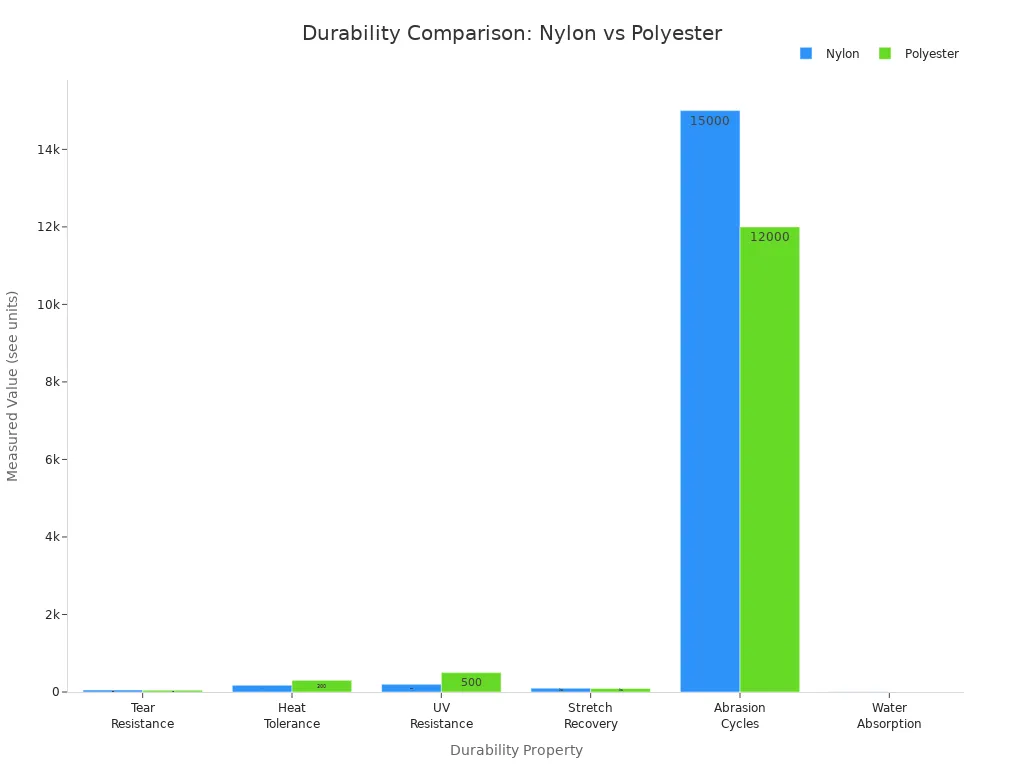
Common Uses
You will find nylon mesh in mesh drawstring bags, sports bags, and even some mesh produce bags. People use these bags for laundry, carrying gym gear, and storing toys. Nylon mesh is also popular for travel bags and backpacks.
Polyester Mesh
Features
Polyester mesh is known for being tough and long-lasting. This mesh is breathable, so air flows through and keeps things dry. You can find it in many sizes and colors. Some bags have drawstrings or zippers for easy use. Polyester mesh is also commercial-grade, so it works well for heavy-duty jobs.
Here are some features you will notice:
- Durable fabric for tough jobs
- Heavy-duty stitching for extra strength
- Breathable to prevent odors and mold
- Many sizes and colors for easy sorting
- Closures like drawstrings or zippers
Polyester mesh bags can last for years if you take care of them. Many people reuse them for up to two years, which saves money.
Pros & Cons
Tip: Choose polyester mesh if you want a bag that stays strong and looks good.
Pros:
- Very durable and resists wear
- Breathable, so items stay fresh
- Handles heat well (up to 300°F)
- Good UV resistance, so it lasts longer in sunlight
- Low water absorption (only 0.4% of its weight)
Cons:
- Not as stretchy as nylon mesh
- Slightly less tear-resistant than nylon
- May cost a bit more than other options
Common Uses
You often see polyester mesh in mesh produce bags and mesh laundry bags. People use these bags for fruits, vegetables, and washing clothes. Polyester mesh also works for storing sports equipment, organizing travel items, and even for industrial uses.
If you ever ask yourself, “what are mesh bags made of,” you now know that polypropylene, nylon, and polyester are the main answers. Each mesh material has its own strengths, so you can pick the best one for your needs.
Cotton Mesh & Organic Cotton
Features
Cotton mesh bags feel soft and natural. Air moves through cotton mesh, so things stay fresh. Organic cotton mesh is good for the environment. It does not use chemical pesticides or fertilizers. You can trust organic cotton mesh with certifications like GOTS. Regular cotton mesh costs less and works well every day. Both types let air in and feel comfortable.
Here’s a table to show the differences:
| Material Type | Features | Sustainability Aspect |
|---|---|---|
| Organic Cotton | Eco certifications (GOTS), no chemical pesticides or fertilizers used. | Sustainable option, ideal for brands focused on sustainability. |
| Regular Cotton | More affordable, lower MOQ, good breathability and comfort. | Practical for customers with tighter budgets. |
| Synthetic Mesh | Typically made from petroleum-based products, less breathable. | Less sustainable due to reliance on non-renewable resources. |
Pros & Cons
Tip: Choose organic cotton mesh bags if you want to help the planet.
Pros:
- Soft and gentle for your hands
- Lets air in, so produce stays fresh
- Organic cotton mesh is safe for the earth
- Regular cotton mesh saves money
Cons:
- Cotton mesh may shrink after washing
- Not as strong as nylon or polyester mesh
- Stains can be hard to clean
Look for GOTS certification to make sure organic cotton mesh is eco-friendly. This label means the cotton follows strict organic rules.
- GOTS Certification: A trusted standard for organic textiles
Common Uses
Cotton mesh bags are used everywhere. People use them for shopping and carrying fruits and vegetables. They also use them for laundry. Eco-friendly brands and shoppers like organic cotton mesh bags. Regular cotton mesh bags are good for daily errands and buying food in bulk. You can also find cotton mesh in reusable produce bags and gift bags.
Other Mesh Materials
PU-Coated Mesh
PU-coated mesh bags have a special layer. This layer keeps water out. Your items get extra protection. These bags work well in wet places or when you need to keep things dry. PU coating makes the mesh stronger and helps it last longer.
Metal/Foil Mesh
Metal or foil mesh bags are tough and look different. You can use these bags for heavy storage or decoration. Metal mesh does not tear easily and can hold sharp things. Foil mesh is shiny and stylish, so people use it for gifts.
Tulle & Synthetic Fibers
Tulle mesh bags look light but can be strong. Tulle is made from synthetic fibers like nylon or polyester. People use tulle mesh for party favors, costumes, or wedding decorations. The weave changes how the bag feels. Tight weaves make the bag firm. Loose weaves make it soft. Good dyes keep colors bright after washing. Tulle mesh bags can be thin and see-through or thick and sturdy, depending on the design.
Here’s a table with the main properties of tulle and synthetic fibers:
| Property | Description |
|---|---|
| Fiber Content | Tulle is mainly made from synthetic fibers like nylon or polyester, so it lasts long and is flexible. |
| Weave Density | Tighter weaves make the bag firm, looser weaves make it soft. |
| Drape | Soft drapes are good for veils and dresses, stiff drapes work for costumes. |
| Colorfastness | Good dyes stop fading, which is important for things that get washed or see sunlight. |
| Durability | Strong fibers help the bag last longer and stop tears. |
| Weight | Heavy tulle is firm, light tulle is thin and see-through. |
| Finish | The finish can be dull or shiny, which changes how the bag looks. |
You can also find mesh bags made from other special materials. Some examples are PEVA, recycled PET (rPET), organic cotton, and biodegradable PLA. These choices are good if you want something eco-friendly or different.
Mesh Bags: Material Comparison

Durability
Durability is important when picking mesh bags. You want a bag that lasts a long time. Nylon mesh is very strong. You can stretch and bend it. It goes back to its shape. Athletes use nylon for gear bags. Nylon does not wear out fast. Polyester mesh is also strong. It works for sportswear and laundry bags. Power mesh is tough too. It keeps its shape and handles pressure. Cotton mesh feels soft and nice. But it does not last as long as synthetic mesh. Cotton pique lets air in and soaks up moisture. It does not stretch much and wears out faster.
Here’s a table to help you compare:
| Material | Durability | Wear Resistance |
|---|---|---|
| Nylon | High, resists wear and tear | Excellent, used in protective gear |
| Polyester | Moderate, used in sportswear | Good, less heat resistant than nylon |
| Power Mesh | Very high, keeps shape | Excellent, for compression garments |
| Cotton Pique | Moderate, soft and breathable | Good, less stretchy and moisture-wicking |
Tip: Nylon mesh is best for rough use. Polyester mesh is good for daily jobs.
Environmental Impact
You may wonder how mesh bags affect the earth. Cotton mesh bags break down over time. Organic cotton mesh is even better for nature. It is biodegradable and safe for the planet. If you care about the earth, pick organic cotton mesh. Synthetic mesh bags last longer. But they do not break down easily. Making nylon and polyester uses lots of energy. These bags can stay in landfills for years. They may hurt fish and other water animals. If you want to help the planet, choose organic cotton or recycled mesh bags.
- Cotton mesh bags: Break down, good for the earth, best for green shoppers.
- Nylon and polyester mesh: Do not break down, use lots of energy, can pollute water.
Note: Organic cotton mesh bags are good for nature. Synthetic mesh bags last longer but may harm the earth.
Cost
Cost matters when you buy mesh bags. Polypropylene mesh bags cost more. They are tough and can handle bad weather. You pay more for strong bags. Polyester mesh bags cost a bit more than nylon. Both are good for daily use. Cotton mesh bags are cheap. Regular cotton mesh is the most affordable. Organic cotton mesh bags cost more. They use eco-friendly farming. Burlap mesh bags are very cheap. But they wear out fast. Special mesh bags, like for filtering or compression, cost more. They need special ways to make them.
- Polypropylene mesh: Strong, light, costs more.
- Polyester mesh: Good value, medium price.
- Nylon mesh: Cheap, strong, lasts long.
- Cotton mesh: Cheapest, soft, not very strong.
- Organic cotton mesh: Costs more, good for the earth.
Tip: Regular cotton mesh bags are good if you want to save money. Nylon or polyester mesh bags last longer and are worth the price.
Suitability
Picking the best mesh bag material depends on your needs. You may want a bag for groceries, sports, laundry, or storage. Each material works well for different jobs.
Nylon mesh bags are great for food. They are strong and last a long time. Nylon lets air move through the bag. This keeps fruits and vegetables dry. Onions and citrus stay fresh longer. Nylon is safe for food. The FDA approves it for food contact. Nylon and polyester mesh bags help you use less plastic. They keep food fresh and help the environment.
For tough jobs, polyester and nylon mesh bags are best. These bags are strong and bend easily. You can carry heavy things without worry. The mesh lets air in. This stops mold and mildew. Your items stay safe from water damage. Many industrial mesh bags have special sizes and strong stitching. This makes them last longer. The mesh is see-through. You can find things quickly.
Here is a table that matches materials with uses:
| Material | Best Use Cases | Key Features |
|---|---|---|
| Nylon | Food packaging, sports gear, laundry | Strong, breathable, food-safe |
| Polyester | Industrial storage, travel, produce | Durable, flexible, easy to clean |
| Polypropylene | Laundry, shopping, packaging | Lightweight, water-resistant |
| Cotton | Grocery, eco-friendly shopping | Soft, biodegradable, comfortable |
| Organic Cotton | Produce, sustainable brands | Eco-friendly, certified organic |
Mesh bags are good for travel and sorting things. Polyester mesh bags help you organize clothes in your suitcase. Cotton mesh bags feel soft and nice. They are good for groceries and personal items. Organic cotton mesh bags are best for people who care about the earth. They break down and use safe farming.
People who work in factories like mesh bags. They come in many sizes and shapes. Air moves through the mesh. This stops water from building up. You can pick eco-friendly bags to help the planet.
Tip: Think about what matters most to you. Do you want strength, air flow, eco-friendliness, or low cost? Pick the mesh bag material that fits your main need. Nylon is best for food. Polyester or nylon is good for heavy jobs. Organic cotton is best for the earth.
Suitability means matching the bag to your needs. Mesh bags give you many choices. Pick the right material for your job.
Choosing Mesh Bag Material
Use Case Factors
Think about how you will use the mesh bag. First, check the size you need. Small mesh bags are good for fruits and vegetables. Big mesh bags work better for laundry or groceries. Make sure the bag can hold the weight you want to carry. Some mesh bags are made stronger, so they can carry heavy things. Different mesh types do different jobs. Raschel mesh bags let air move and keep food cool. Leno mesh bags are tough and hold heavy stuff. If you want the bag to feel nice, pick one with soft straps or a padded back. Light mesh lets air in and makes the bag easy to carry. Sometimes, you may want a bag that looks cool. Decorative mesh bags look nice, even if air flow is not important.
Here’s a quick list to help you pick:
- Pick the right size for what you carry.
- Check if the bag can hold heavy things.
- Use Raschel mesh for fruits and stores.
- Use Leno mesh for big jobs and shipping.
- Look for soft straps and good air flow.
- Choose a stylish bag if you want it to look nice.
Budget Considerations
How much money you have matters when picking mesh bags. Some mesh bags cost more because they last longer or have special features. Nylon mesh is strong and good for heavy things, but it costs more. Polyester mesh is good for many uses and comes in lots of colors. Light mesh is cheaper, but it is best for light things.
Here’s a table to help you compare:
| Material Type | Durability | Cost Consideration | Best Use Case |
|---|---|---|---|
| Nylon Mesh | High | Moderate | Heavy items |
| Polyester Mesh | Medium | Low to Moderate | General use, colorfastness |
| Lightweight Mesh | Low | Low | Flexible, lightweight designs |
If you need many mesh bags for your business, buy bulk mesh fabric. This saves money and keeps the bags good quality.
Sustainability Preferences
If you care about nature, you have choices. Mesh bags made from recycled stuff help cut down on plastic trash. These bags break down faster than regular plastic bags. They do not make as many microplastics. Making them uses less energy and they are safer for animals.
Eco labels are important too. If you see GOTS, the mesh is made from organic fibers and follows safe rules. Labels like BPI or TÜV Austria OK Compost mean the bag can break down in compost.
Here’s a table to show how mesh bags and plastic bags are different:
| Feature | Mesh Bags | Plastic Bags |
|---|---|---|
| Material Composition | Recycled materials | Petroleum-based resin |
| Decomposition Time | Biodegradable, recyclable | Hundreds of years |
| Environmental Impact | Reduces plastic waste | High footprint |
| Durability | More durable for daily use | Short lifespan |
| Microplastics Release | Less likely | Contributes to microplastics |
| Energy for Production | Lower | Higher |
| Wildlife Safety | Safer for animals | Can attract pests |
If you want to help the earth, pick mesh bags with green materials and trusted labels.
Quick Selection Tips
Choosing the right mesh bag material can feel tricky, but you can make it easy with a few smart shortcuts. You want a bag that fits your needs, lasts long, and feels good to use. Let’s break down the top tips so you can pick your mesh bag like a pro.
First, check out this table. It shows the main mesh bag materials, their best features, and what they work well for:
| Material Type | Key Attributes | Best Use Case |
|---|---|---|
| Polyester (PET) | Holds shape, dries fast, cost-effective | Broad use, higher structure |
| Nylon (PA) | Smooth feel, great abrasion resistance | Delicate items that snag easily |
| Recycled PET | Same performance, lower footprint | Sustainability programs |
| Cotton mesh | Breathable, but can shrink | Storage, not ideal for heavy wash cycles |
You can use this table as a cheat sheet. If you want a bag that keeps its shape and dries quickly, go for polyester. If you need something soft and tough, nylon is your best bet. Want to help the planet? Pick recycled PET. If you like natural fibers, cotton mesh works for light storage.
Now, let’s talk about what makes a mesh bag last longer and work better. Here are some quick tips you can use when you shop:
- Look for a nylon coil zipper with an auto-lock slider. This keeps your bag closed, even during a busy laundry cycle.
- Check if the bag has a zipper garage. This small feature protects the zipper pull tab from getting worn out.
- See if there are bar-tacks at the zipper ends and corners. Bar-tacks add strength where the bag gets the most stress.
- Look for binding over seams. Binding helps reduce friction and makes the bag tougher.
- Make sure the bag has overlock stitching plus top-stitching. These stitches give you a clean edge and extra durability.
Tip: If you want a mesh bag that lasts, pay attention to the stitching and zipper details. Small features can make a big difference.
You don’t need to memorize every detail. Just remember to match the material to your main use. Polyester works for most jobs. Nylon is great for delicate things. Recycled PET is perfect if you care about the environment. Cotton mesh feels nice but may shrink after washing.
If you want a quick answer, ask yourself these questions:
- What will you carry in the bag?
- Do you need it to last through many washes?
- Is eco-friendliness important to you?
- Do you want a soft or sturdy feel?
Pick the mesh bag that checks the most boxes for you. With these tips, you can shop with confidence and find the perfect mesh bag in no time.
Conclusion
Now you know what mesh bags are made of. Each material is different. Look at this table to see how they compare:
| Material | Durability | Eco-Friendly | Cost | Best Use |
|---|---|---|---|---|
| Polyester Mesh | High | Moderate | Low | Sports, laundry, bulk |
| Nylon Mesh | Very High | Moderate | Moderate | Premium, promo, retail |
| Cotton Mesh | Moderate | High | Moderate | Produce, eco shopping |
| RPET Mesh | High | Very High | Moderate | Sustainable packaging |
What you choose affects how long your bag lasts, its cost, and its environmental impact.
As a professional mesh bag manufacturer, we offer OEM & ODM customization services to meet your unique design, size, and branding needs.
If you’re looking for wholesale or custom mesh bags, our factory can help you create the perfect solution for your business.
FAQ
What is the strongest material for mesh bags?
Nylon mesh gives you the best strength. You can stretch it, and it snaps back. Athletes and travelers trust nylon for heavy gear. If you want a tough bag, nylon is your top choice.
Are mesh bags safe for food storage?
Yes, you can use mesh bags for food. Nylon and polyester mesh bags work well for fruits and vegetables. These materials let air flow and keep produce fresh. Always check for food-safe labels.
Can I wash mesh bags in the washing machine?
You can toss most mesh bags in the washing machine. Use cold water and gentle detergent. Avoid bleach. Air dry the bag to keep its shape. Cotton mesh may shrink a little after washing.
Which mesh bag material is best for the environment?
Organic cotton and recycled PET mesh bags help the planet. You can compost organic cotton. Recycled PET uses old plastic bottles. If you want eco-friendly options, look for these materials.
Do mesh bags come in different sizes and colors?
You can find mesh bags in many sizes and colors. Stores offer small bags for produce and large bags for laundry. Polyester mesh bags come in bright colors. You can pick what fits your style.
How do I choose the right mesh bag for my needs?
Think about what you want to carry. If you need strength, pick nylon. For groceries, cotton mesh works well. Polyester suits travel and sports. Check the size, durability, and eco labels before you buy.


